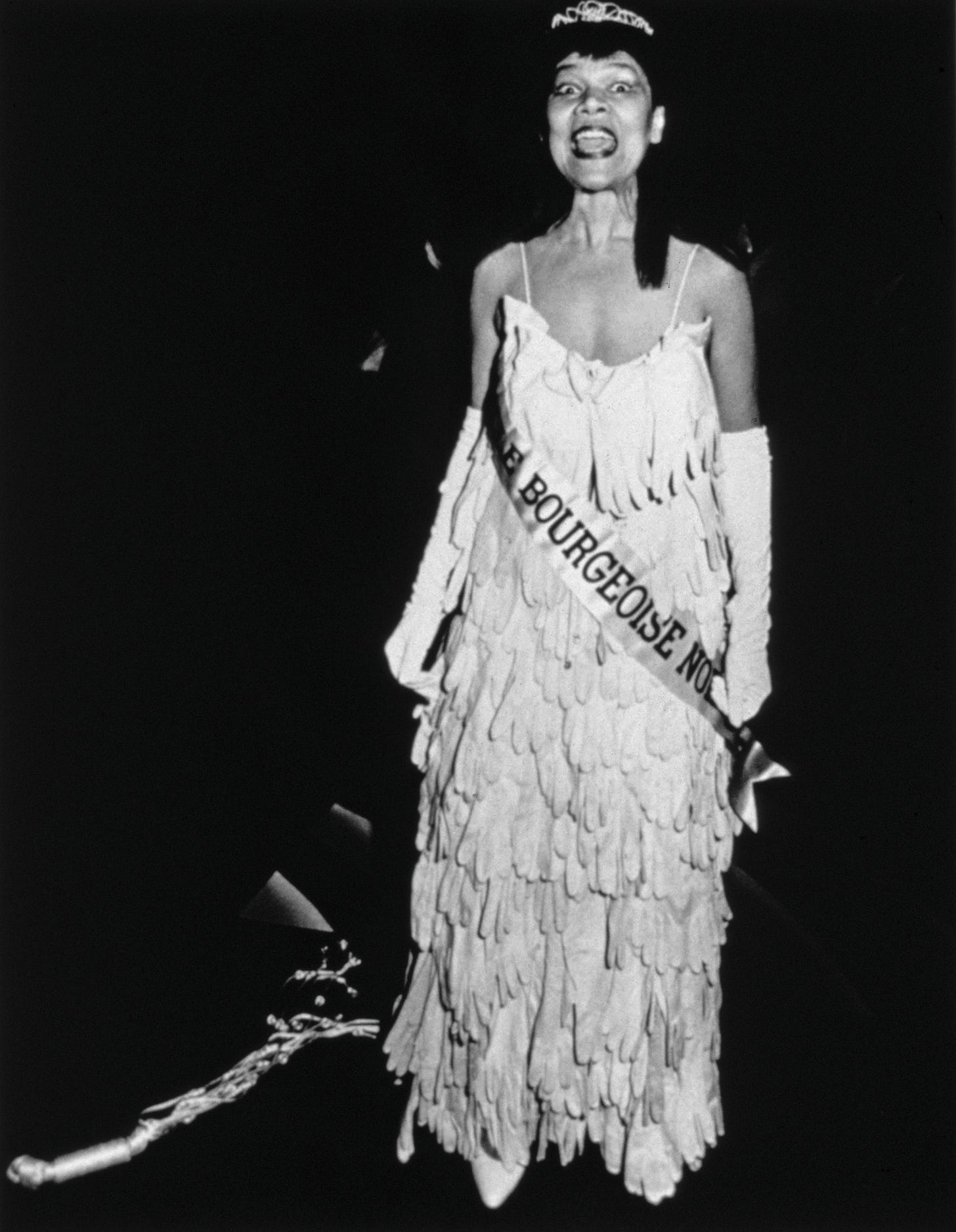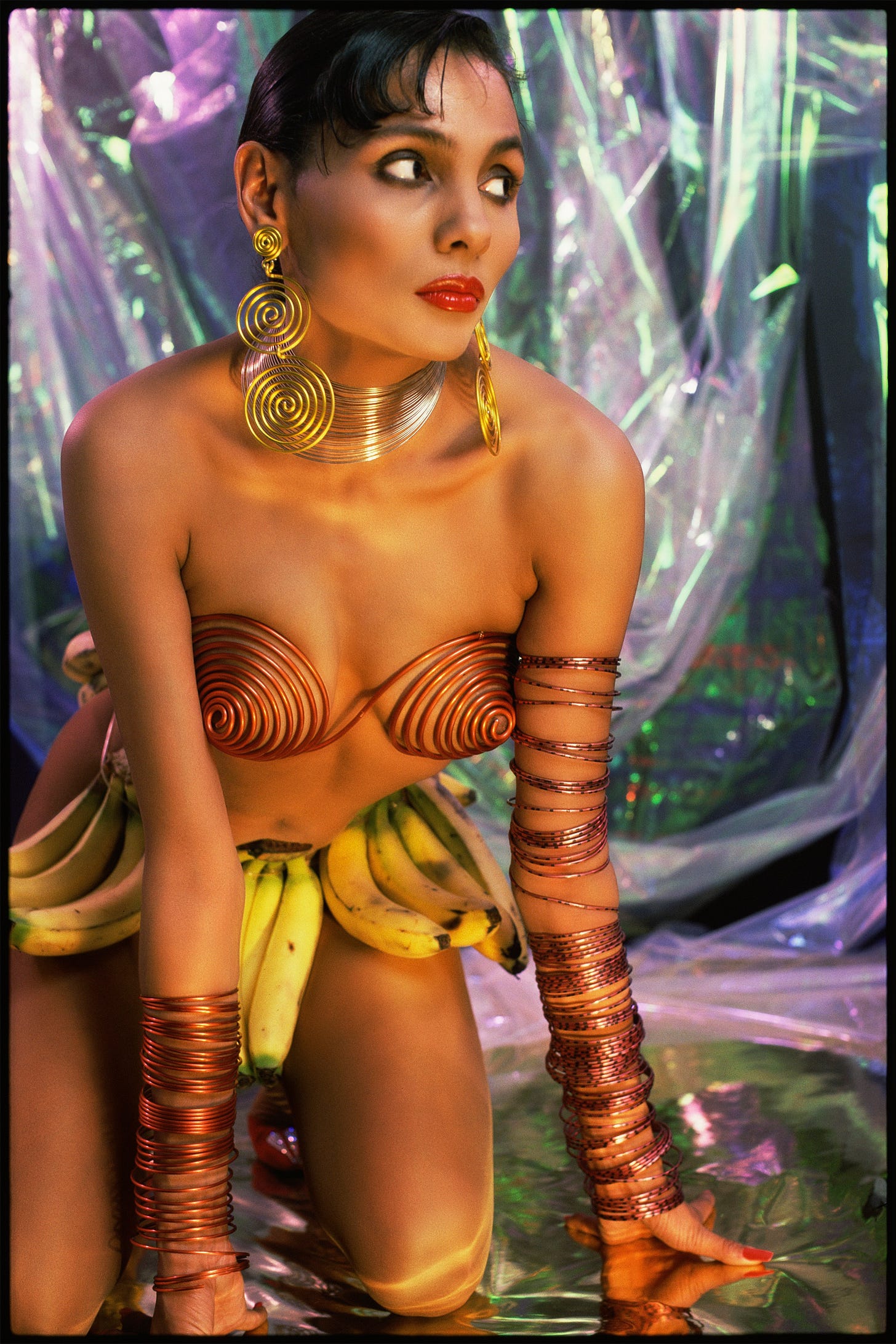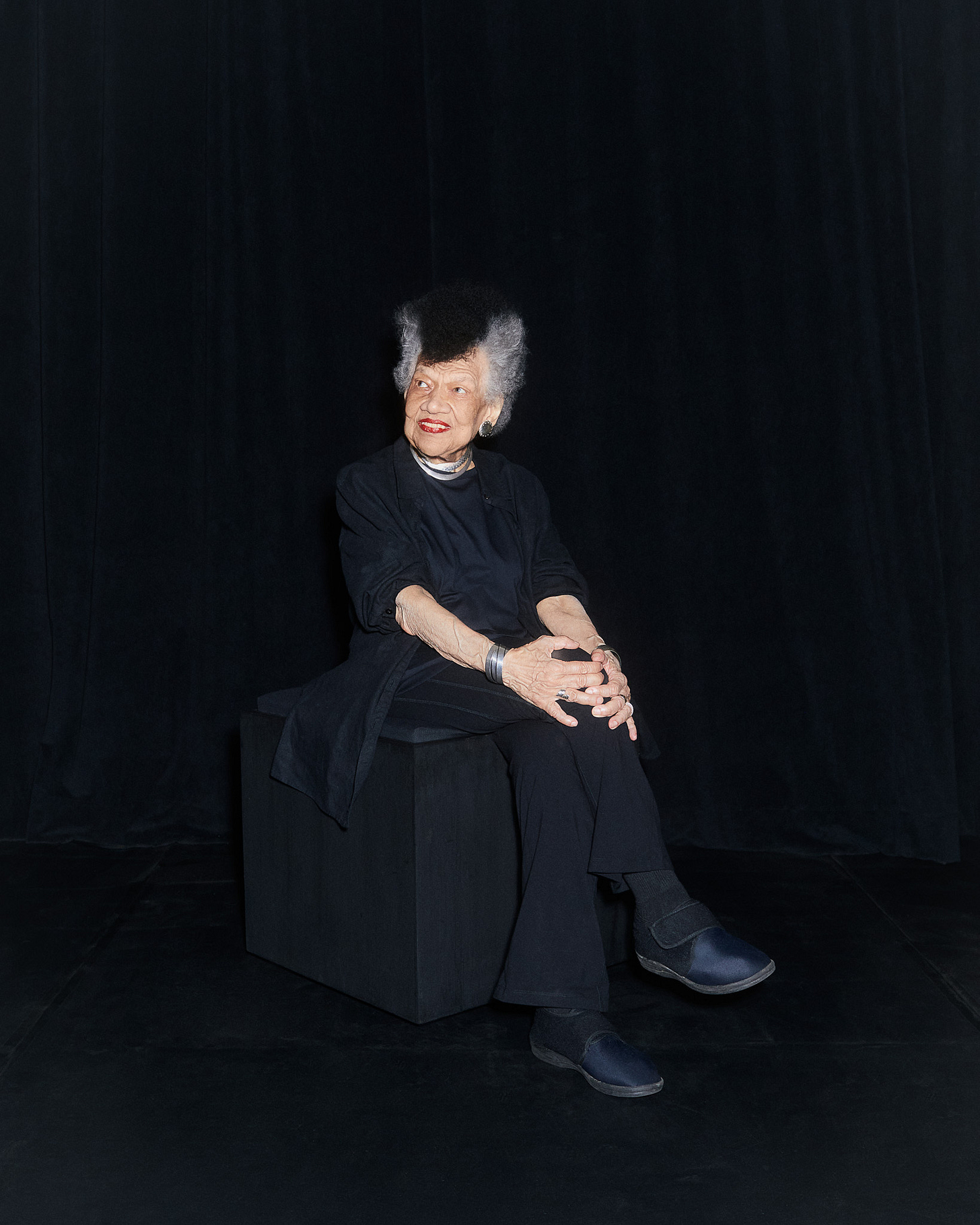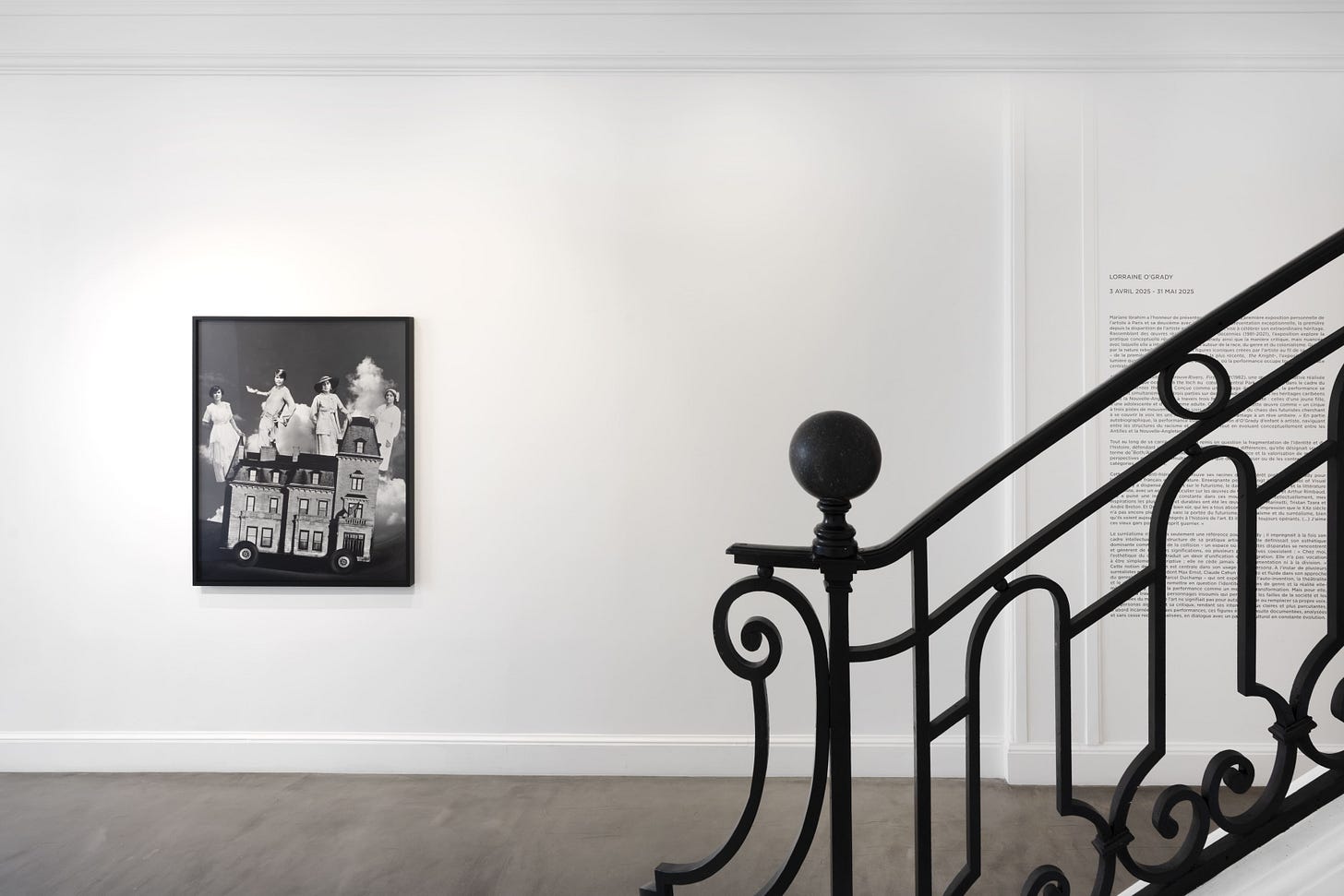Paris Noir: Celebrates Black Artists Who Transformed the City
A look at the Centre Pompidou exhibition – whilst honoring Faith Ringgold, Lorraine O'Grady, and other overlooked pioneers

As part of our new contributor series, I'm delighted to share Greta Morton Elangué's look at the Paris Noir exhibition. While the show celebrates Paris as a destination for Afro-descendant artists, Morton Elangué highlights the lack of inclusion of Black women artists. Drawing a parallel to the statue of Joséphine de Beauharnais, now tucked away in a greenhouse at Château de Malmaison, she explores how French institutions engage in a kind of "curated forgetting." Her focus on artists Faith Ringgold and Lorraine O'Grady reveals how creative resistance continues to challenge the dominant cultural narrative.
Please consider supporting Shade Art Review with a subscription. As a reader-supported publication, I share 50% of all subscription income directly with my contributors.
If you're unable to subscribe for 83p weekly, please like and share this writer's work to help it reach a wider audience. Shade Art Review takes hours of dedication to produce, and while we deeply appreciate your emails of support, financial contributions make it possible for us to continue publishing thoughtful criticism like Morton Elangué's piece.
Your subscription makes a real difference in sustaining independent art writing and fairly compensating our contributors. Thank you for supporting our community of writers and thinkers.
At the Château de Malmaison, just a short 30-minute RER ride from Paris, tucked behind the foliage inside an off-site greenhouse, stands a white statue of Joséphine de Beauharnais, wife of Napoleon Bonaparte. Created by sculptor Vital Gabriel Dubray in 1865, two casts of the statue were made from the outset: one for France, the imperial center, the other for Joséphine’s birthplace, the French Caribbean slave colony of Martinique. While the version in Fort-de-France, Martinique (now a French overseas department), was beheaded in 1991 and later stained red in protest of Joséphine’s association with slavery and colonial violence, its twin was quietly moved into the greenhouse at Malmaison in 2021.
There’s something telling in that gesture. Not quite an erasure, but a strategic displacement, what Françoise Vergès might call a “curated forgetting.”
It’s one of the many small ironies that shadow Paris Noir, a much anticipated exhibition at the George Pompidou Centre in Paris, that celebrates the city’s role as a cultural refuge for Afro-descendant artists, while the structures of its colonial past still hover just out of frame.
The show invites us to witness those overlooked, silenced, and erased in art history. Afro-descendant artists who fought for space in a culture that has not always accorded them visibility, artistically or politically. “This is a high stakes moment”, said Pamela Joyner, African-American art collector and cultural steward, during the opening colloquium for the exhibition.
Emerging as a counter-canon, the Paris Noir exhibition does have the potential to disrupt: with more than 150 artists represented—from Dakar to Detroit, Port au Prince to Harlem and beyond—it offers a complex map of radical Black aesthetics over the course of five decades (1950-2000).
Artists like Cuban sculptor, Augustin Cardénas, African-American abstractionist, Ed Clark and exiled South African painter Gerard Sekoto, who all lived in Paris in the 1950’s and 1960’s, appear proudly alongside fellow visual insurgents like African-American photographer Ming Smith and Franco-Senegalese artist, Diagne Chanel.
But what is on the line in this high-stakes moment? Recognition? Repair?
Because despite this exhibition offering visibility to many artists who trained in Paris, or who formed solidarities with the Pan-African movement, the Afro-Atlantic surrealists, Caribbean artists and philosophers like Édouard Glissant and of course the legendary figures James Baldwin or Beauford Delaney, the exhibition exposes a glaring absence:
Of the 150 artists featured, only 22 are women.
This absence of Afro-descendant female artists from Paris Noir is particularly apparent in the first two decades of the curatorial timeline (1950-1970), inviting us to probe deeper.
Of the African-American founding ex-pat figures featured in the show, Romare Bearden and Herbert Gentry were able to study in Paris post-WW2, largely due to the GI Bill. These men, exceptions to the rule, used their status both as veterans and as artists to navigate the racial and gendered borders that would otherwise be closed to them. Yet, in the same period, African-American women remained almost entirely absent from this expatriate movement. The GI Bill’s benefits were shaped by deep racial and gender bias, which meant that the art world—particularly at this foundational moment in Paris—remained a space for male visibility, while women, particularly Black women, remained invisible.
This powerful silence speaks volumes about the racial and gendered structures of the time. But how has their absence shaped the narrative we now tell? Should we be curating the absences?

Whilst expatriate female African-American artists like Mary Lovelace O’Neal, Faith Ringgold and Ming Smith appear later within the Paris Noir narrative, it is important to note that very few of these exceptional artists have been formally acquired by French institutions.
Exploring further how deeply these institutional structures continue to shape what we see, and what we don't, is important, ongoing work.
As scholar Kelly-Christina Grant’s research makes it clear, the numbers are stark. Since the 1970s until 2021, French public collections have purchased only around 50 works by 10 African-American women artists. Between 1970 and 2000—the time frame of the Paris Noir exhibition—only three works by African-American women were acquired. Meanwhile, the Centre National des Arts Plastiques (CNAP), custodian of more than 1,000 works by 206 American women artists, holds only fourteen by five African-American women.
Statistically speaking African-American women artists aren’t so much under represented as nearly invisible in these French institutional collections. Among the absent, in this time-frame, is the Harlem born artist, Faith Ringgold, one of the most prolific (and prophetic) African-American artists of the 20th and 21st centuries, whose work directly confronts the narratives that these institutions hold dear.
Faith Ringgold’s relationship with France began in 1961, when she travelled to Paris with her mother to exorcize, as she put it, the “fathers” of Modernism—Degas, Cézanne, Utrillo—whose influence had been embedded in her training. “Those artist’s were in me and I had to get that out.” she said. “That can be very deadly, you know... probably finished off a lot of people, not being able to get those artists out of their heads.”
Her reckoning took shape in the form of Paris Connection (1991); a suite of large-scale “story quilts” combining painting, text, and the African-American tradition of quilting. At the centre of each of these tableaux is Willia Marie Simone, Ringgold’s fictional alter ego: an African-American art student and model navigating the Parisian art world in the 1920’s. In her reframing of Picasso’s Les Demoiselles d’Avignon (1907), the story quilt titled Picasso’s Studio (1991), positions Willia Marie in a bold, confident pose for Picasso, not as muse, but as witness. Surrounded by African masks, a letter embroidered onto the frame reads:
“The European artists took a look at us and changed the way they saw themselves. Aunt Melissa, you made me aware of that. Go to Paris, Willia Marie, you told me, and soak up some that Africana they using in those cube paintings.”
Through her avatar Willia, Ringgold collapses personal memories, ancestral whisperings, and Black feminist politics into stitched narratives, parodying the exclusions of the European art historical canon.
Filling the void of the absent female Black artist’s voice in Paris, the story quilt titled Le Café des Artistes (1994) is a visual and textual parody of the many manifestos penned in the 20th century; the afriCOBRA manifesto in the USA or the Dada manifesto of 1916, to name two. Ringgold’s avatar creates her own artistic statement, titled The Colored Woman’s Art and Politics.
She dialogues directly with her intellectual and artistic peers, the men grouped to the left, the women to the right and Willia sitting centrally between the artist’s, including William H. Johnson, Archibald Motley, Jacob Lawrence, Elizabeth Catlett, Lois Mailou Jones and Augusta Savage. Like a loud congress, the chorus of famous artistic and intellectual voices discuss their preoccupations:
You are primitive but very pretty.
Paris artists are shaping the culture of the world with their ideas.
Willia Marie: But modern art is much bigger than Western Europe or Paris. I am here, (in Paris). I am there (in Africa) too. That is why I am issuing a Colored Woman’s Manifesto of Art and Politics.
You should learn French cooking, it will help you to blend your couleurs.
No, she is a natural with couleur. Very primitive.
Willia Marie: I will call a Congress of African American Women artists to Paris to propose that two issues be discussed. What is the image of the Colored Woman in art? And what is our purpose as modern artists?
Throughout the story-quilts Willia Marie becomes a witty guide in the cultural Francosphere, part oracle, part weapon-through which Ringgold envisions a future of institutional recognition that, ironically, as we have seen, eludes the artist in France, even today.
French-Somali gallerist Mariane Ibrahim, who has established herself as a leading global art dealer through her spotlight on artists of the diaspora noted in a 2022 interview that France is not dealing with conversations about its ‘past tense’ relationship with Africa, in the context of contemporary art today:
“The scene of contemporary African art (in France) is almost absent - these new artist’s expressions are not validated by the institutions yet, I think because there are no infrastructures that allow those presentations.”

Opening a gallery in Paris in 2021 was a project was intended to excite and engage with these French institutions. Celebrating this momentum, the Mariane Ibrahim Gallery has chosen to honour the African-American conceptual artist and writer Lorraine O’Grady, who, like Faith Ringgold, has also been absent from the French institutional collections in the 1970-2021 period.
And according to the gallery, 2025 was meant to be “Lorraine’s year” in Paris. They gifted her a set of luggage, a symbolic gesture for the anticipated journey across the Atlantic for her first French solo show. At 90 years old, O’Grady had spent much of 2024 preparing for this momentous voyage. Her infamous alter ego, Mademoiselle Bourgeoise Noire (Miss Black Middle Class), was poised to make her mark. But just a few months before her trans-Atlantic crossing, Lorraine O’Grady passed away.

Entering the gallery in the rue Matignon, it seems a poetic curatorial choice to open her exhibition with a large and whimsical piece The Strange Taxi: From Africa to Jamaica to Boston: 200 Years (1991/2019). This photomontage work encapsulates the voyage(s) of O’Grady’s female ancestors, her mother and aunts, as they are symbolically transported atop the roof of a New England mansion. The mansion itself rolls on wheels across ground made of an African woman’s back. Several temporalities exist in this image; the women can be seen as escaping from an oppressed past and yet, O’Grady notes in an interview, the piece “collapses past, present and future into a single dimension”, evoking “what their possibilities might be for the future”.
O’Grady’s most iconic creation, born out of the artist’s sharp critique of class and race, is Mademoiselle Bourgeoise Noire (1980-1981), a 1955 beauty queen from Guyana. Exhibited today at the Parisian gallery in a series of black and white photographic instalments taken during one of her legendary performances, this glamorous/angry alter ego was a performative response to the palpable apartheid in the art world. Calling out the continual exclusion of women and Black artists, Mademoiselle Bourgeoise Noire dressed in a white debutante costume made of 180 pairs of elbow-length white gloves (symbolising that which is repressed), shouted poems of protest and lashed herself with a cat-o’-nine-tails made from sailing rope and white chrysanthemums. She called this prop “the whip-that-made-plantations-move.” The first performance was in 1980 at the Just Above Midtown gallery in New York, a gallery known for supporting ground- breaking art by African-American artists.
A second guerrilla style intervention by Mademoiselle Bourgeoise Noire was performed in 1981 at a reception at New York’s New Museum of Contemporary Art. In that iteration, O’Grady protested the fact that no artists of colour were included in the exhibition that night and went on to recite a poem addressing the racial segregation of the art world.
“Mademoiselle Bourgeoise Noire is an extremely directed body of work. …[It was all about] what’s wrong with the art world, and what we need to do to remedy it,” O’Grady said in an interview for The New Yorker.
Lorraine O’Grady and her contemporary, Faith Ringgold are both two of the most revolutionary artists and cultural critics of the last 50 years, who have, in their own ways, created radical, speculative, counter-worlds for their alter egos to occupy. Transformative worlds that rearrange time to show how things might be and to confront the important erasures of Black women in the art canon. These imaginative forms of painted, stitched and performed resistance are our guides to a desired future.
Lorraine O’Grady’s solo exhibition at Mariane Ibrahim Gallery in Paris continues through till May 31. The artist’s Art Is series (1983) is included in Collective Joy at Palais de Tokyo until May 11 2025.
Faith Ringgold’s The Bitter Nest, Part IV: The Letter (1988), is exhibited in Paris Noir at the Pompidou Centre until June 30 2025.
Several exhibitions open in May as part of the Paris Noir Echoing Black Paris program.
Greta Morton Elangué is a Paris based writer, curator, filmmaker and historian whose focus is Black diasporic and Indigenous artistic expression.






Readers! Family! Do like or share posts that you’ve read and enjoyed. I receive so many of your wonderfully positive emails about your love for Shade, thank you, so it would be really helpful if you could help us work the algorithm to include Black art voices on Substack - with a simple tap on “like” or “share” you’d be supporting that. Thank you darlings, see you next time!
Still thinking about O’Grady’s unused luggage in the context of this piece, so moving. Thanks for writing this Greta